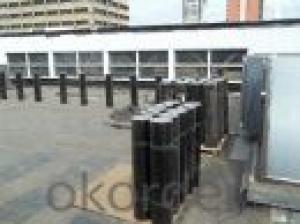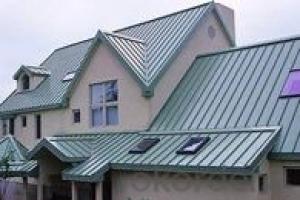SBS And APP Bituminous Waterproof Membrane
- Loading Port:
- Shanghai
- Payment Terms:
- TT OR LC
- Min Order Qty:
- 1000 m²
- Supply Capability:
- 200000 m²/month
OKorder Service Pledge
OKorder Financial Service
You Might Also Like
Product description
SBS Waterproof Material Self Adhesive Aluminium Membrane is produced with SBS elastomer and bitumen as raw materials, using polyethylene film.
Aluminium foil coated on the upward or no file(both side self-adhesive) while self-adhesive protection layer on the downward
surface.It has a widely prospect new contruction waterproof materials. Good self-adhesion, no leaking,cold flexibility,especially
in self-adhesion. That is unque product in waterproof and application.
Packaging & Shipping
use advanced equipment to produce 2 meters WSBS Width Elastomeric Modified Bitumen Waterproofing Membrane which is made of bitumen modified with Styrene-Butadiene-Styrene (SBS) as dipping and painting. Its upper surface covers PE membrane and color sand or schist, and lower surface is made of isolation material. Products correspond to the national standards GB18242-2008(elastomeric modified bitumen waterproofing membrane).
Package and transportation-- SBS waterproof membrane / APP waterproof membrane / Asphalt waterproof membrane for building waterproofing construction :
1. Torch on bitumen membrane sheets 4mm should be stored under dry and ventilated conditions.
2. Different types of membranes must be piled separately.
3. Under usual condition, storage period is one year since production date.
4. Membrane roll should be put vertically during transportation. It should be kept away from sunshine and rainwater.
.
Advantagee
1.1m or 2m width, we can produce as your requirment
2.Simple and Efficient Construct, Greatly Saving Construct Period
3.Advanced Production Line
4.Excellent Comprehensive Physical Properties
5.Stable Dimension
6.Wide Adaptability of Facing Material
7. Cold-applied construction with no open flame and self-adhesion without bonding agent make it safe, low- carbon, environmental, and economical.
8. Excellent adhesive performance guarantees the integrity of waterproof layer.
9. Good rubber elasticity, elongation and shear stress.
10. Good low-temperature property.
Application method
1) Widely used in the industrial and civil building roofing, underground, pool, tunnel, wooden and metal roofing.
2) Specially applied in the oil depot chemical factory, garment factory, and granary.
3) Especially used in cold places.
4) Tape used for sealing all construction material surfaces.
Our Services
1.If you need some advises for the waterproof construction, we have the best engineer to serve you.
2.We send the free samples to you by freight collect.
3.We will guarantee the quality and the competitive price.
4.We will give you the best packaging and safe shipping.
5.If any problem, we will always be right here waiting for you.
Storage:
Different types or specifications of products should be separated, not mixed.
Keep it dry and ventilated, protected from the sun or rain.
Storage temperature should never be higher than 45 °C. Pile up the membranes flatwise whose stockpile height never exceeds five layers. One layer is guaranteed if it is placed vertically.
Prevent it from inclination or In the process of transportation, it should be lying in case of inclination or lateral pressure. If necessary, cover it with felt-cloth.
Storage time is at least one year from manufacture date on if the product is under normal operation of storage.
Technical Parameters
Item | Index | ||||||
1 | Thickness of resin layer of the middle fabric ,mm≥ | - | - | 0.40 | 0.40 | 0.40 | |
2 | Tensile performance | Max tensile strength,N/cm ≥ | - | 120 | 250 | - | 120 |
Tensile strength,NPa ≥ | 10 | - | -10 | - | - | ||
Max elongation% ≥ | - | - | 15 | - | - | ||
Breaking elongation % ≥ | 200 | 150 | - | 200 | 100 | ||
3 | Heat treatment size change rate%≤ | 2.0 | 1.0 | 0.5 | 0.1 | 0.1 | |
4 | Cold bonding | -25°c No cracks | |||||
5 | Watertightness | 0.3mPa,2h waterproof | |||||
product show
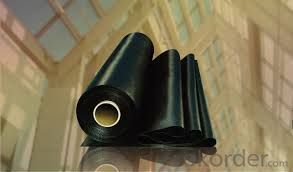
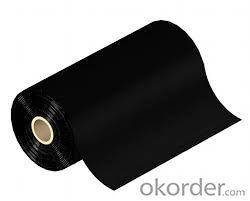
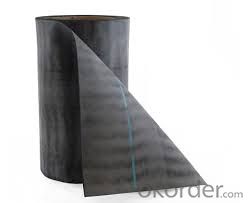
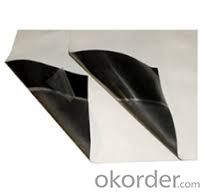




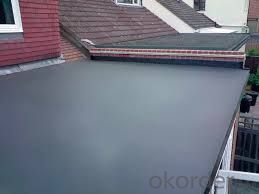
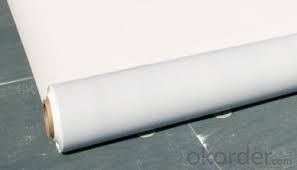
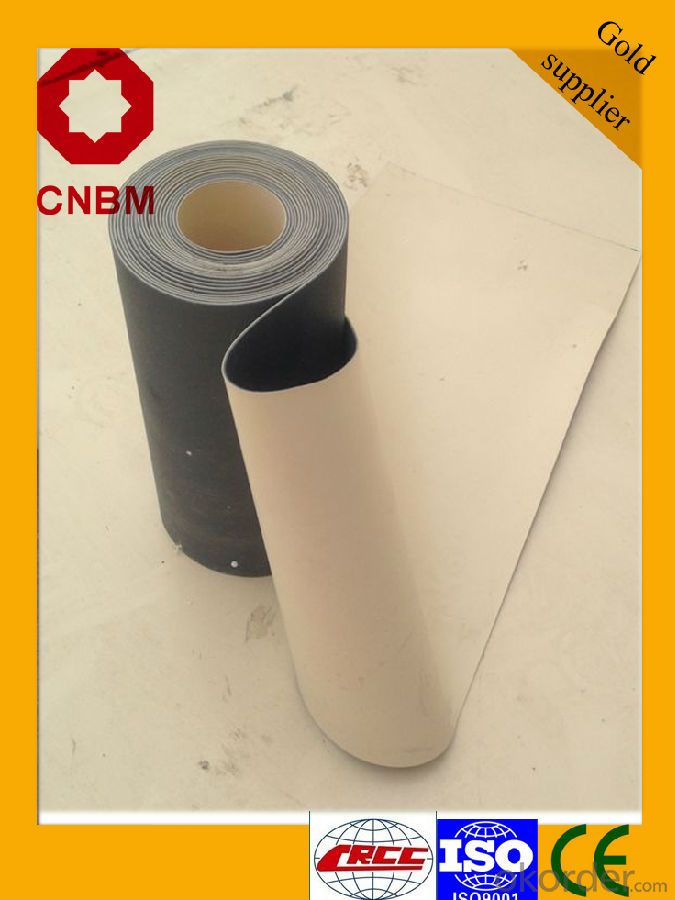
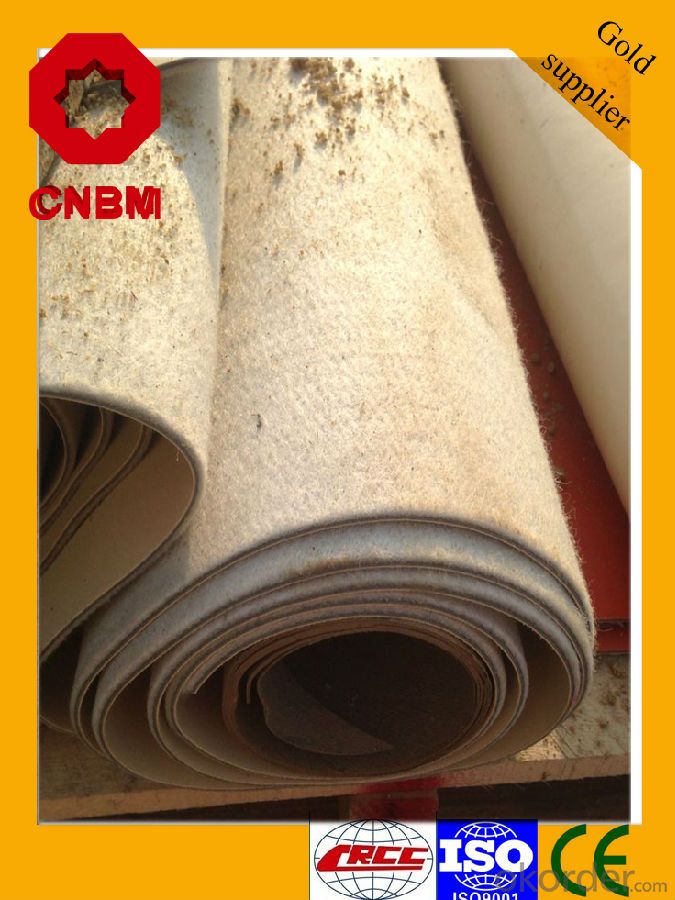
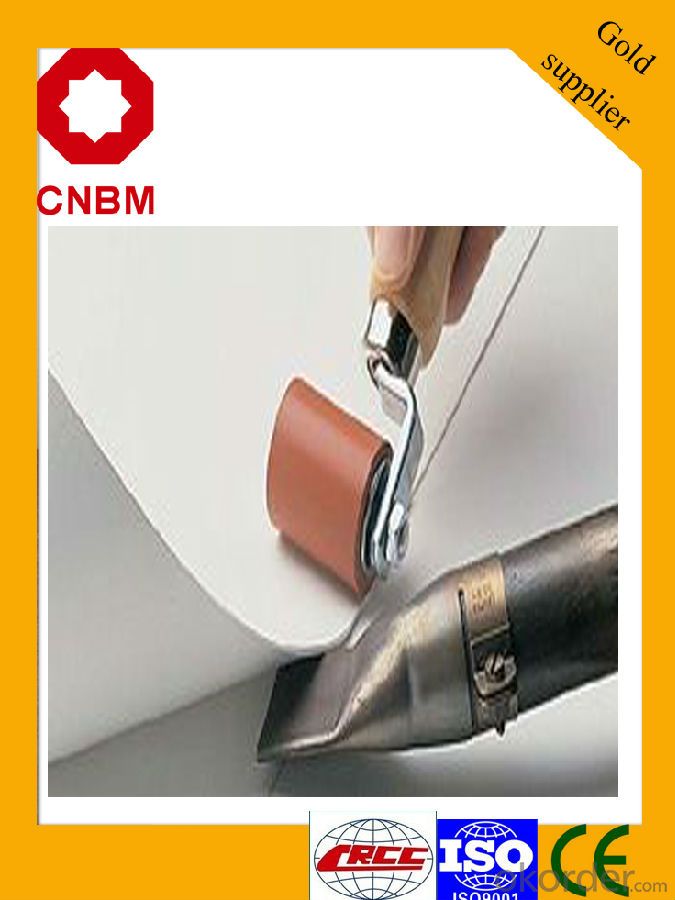

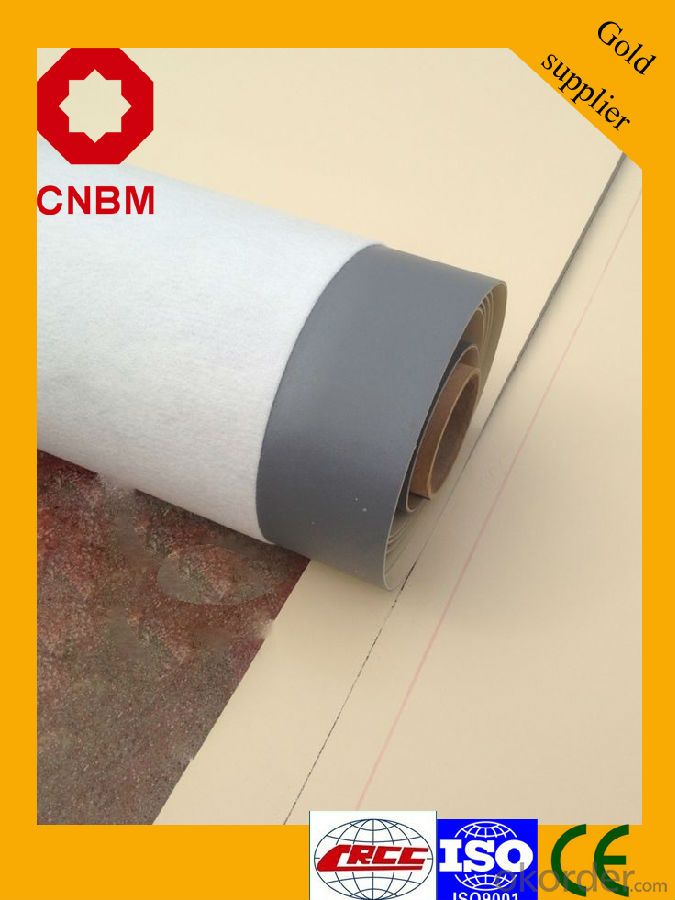
FAQ
Q: What's the de6abf1fe186f8d58506cbcfe46eed814d.jpglivery time ?
A: 3-5 days for 1-600 rolls, 10-15 days for container.
Q: What's the payment terms ?
A: TT/LC
Q: How do you make replacement with quality problems ?
A: New replacement will be packed into your next order or send to you directly after receive video or photo about quality problems.
- Q:How does a waterproofing membrane withstand temperature changes?
- The material composition and structural properties of a waterproofing membrane are designed to withstand temperature changes. Typically made of materials like modified bitumen, EPDM, PVC, or TPO, these membranes have inherent properties that allow them to expand and contract with temperature variations, ensuring their effectiveness and integrity. Flexibility is a crucial aspect of these membranes, as it allows them to accommodate temperature changes. When exposed to heat, the membrane expands to prevent any cracks or splits. On the other hand, in colder temperatures, it contracts to maintain its integrity and prevent any gaps from forming. This flexibility also helps absorb any movement or stress caused by thermal expansion and contraction, preventing damage to the waterproofing system. In addition to their flexibility, these membranes often include additives that enhance their resistance to temperature changes. UV stabilizers protect the membrane from sunlight damage, while thermal stabilizers help maintain its integrity and performance in extreme temperatures. Furthermore, proper installation techniques are vital for the ability of waterproofing membranes to withstand temperature changes. Sufficient overlap and secure sealing of joints and seams create a continuous and strong barrier against water infiltration. This ensures that the membrane remains effective, even when faced with temperature fluctuations. In conclusion, waterproofing membranes are specifically engineered to withstand temperature changes by utilizing flexible and durable materials, incorporating additives to enhance resistance, and employing proper installation techniques. This allows the membranes to adapt to varying temperature conditions, maintaining their effectiveness and providing long-lasting protection against water intrusion.
- Q:Can a waterproofing membrane be used on tunnels with security systems?
- Indeed, tunnels with security systems can utilize a waterproofing membrane. It is strongly advised to employ a waterproofing membrane in tunnels, particularly those equipped with security systems, to safeguard the infrastructure and valuable equipment from water harm. Waterproofing membranes are specifically crafted to impede water infiltration, furnishing a protective shield against water leakage and potential complications stemming from moisture, such as corrosion, mold propagation, and structural degradation. By implementing a waterproofing membrane in tunnels featuring security systems, the integrity of the tunnel structure and the efficacy of the security systems can be upheld, guaranteeing the facility's safety and security.
- Q:Are waterproofing membranes suitable for bridge abutments?
- Yes, waterproofing membranes are suitable for bridge abutments. Bridge abutments are the structures that support the ends of a bridge, and they are typically exposed to a significant amount of moisture and water. Waterproofing membranes are designed to provide a protective barrier against water and moisture intrusion, making them an ideal solution for bridge abutments. These membranes are typically made from materials such as bitumen, PVC, or EPDM, which are highly resistant to water penetration. Additionally, waterproofing membranes can also provide protection against other factors such as UV rays, chemicals, and temperature fluctuations. By installing waterproofing membranes on bridge abutments, the risk of water damage, deterioration, and corrosion can be significantly reduced, leading to increased durability and longevity of the bridge structure.
- Q:Can a waterproofing membrane be installed on a roof?
- Yes, a waterproofing membrane can be installed on a roof. A waterproofing membrane is a type of material that is specifically designed to provide a protective layer on a surface, preventing water from seeping through. When installed on a roof, a waterproofing membrane acts as a barrier against moisture, preventing leaks and water damage to the underlying structure. It is commonly used in flat or low-sloped roofs, where water can accumulate and cause issues. The installation process typically involves cleaning and preparing the roof surface, applying the membrane in overlapping layers, and securing it with adhesives, fasteners, or heat welding. Additionally, a waterproofing membrane can also help in extending the lifespan of a roof by protecting it from UV rays, temperature fluctuations, and other environmental factors. Overall, installing a waterproofing membrane on a roof is an effective way to ensure its long-term durability and prevent water-related problems.
- Q:Can a waterproofing membrane be used on concrete walls?
- Concrete walls can benefit from the use of a waterproofing membrane. These membranes are specifically designed to prevent water from penetrating the surface and can be applied to various surfaces, including concrete walls. Common materials used for these membranes include modified bitumen, rubberized asphalt, and synthetic polymers, all of which are highly resistant to water and moisture. By applying a waterproofing membrane to concrete walls, one can effectively prevent water seepage, dampness, and potential damage caused by water infiltration. The membrane acts as a protective barrier, stopping water from permeating through the concrete and reaching the interior spaces. Additionally, it helps maintain the structural integrity of the concrete by reducing the risks of cracks, efflorescence, and other forms of moisture-related deterioration. There are several types of waterproofing membranes available in the market, such as sheet membranes, liquid membranes, and cementitious coatings. The choice of the membrane depends on factors such as the specific application, the degree of water exposure, and the condition of the concrete wall. It is essential to select a membrane that is compatible with the concrete and provides long-lasting waterproofing protection. Before applying the membrane, it is crucial to properly prepare the concrete surface. This involves tasks such as cleaning, repairing any cracks or imperfections, and ensuring that the surface is dry and free from contaminants. The membrane is then installed according to the manufacturer's instructions, which usually involves adhering it to the concrete or applying a liquid membrane with a brush or roller. To sum up, a waterproofing membrane is a valuable solution for protecting concrete walls from water infiltration. By choosing the right type of membrane and following proper installation procedures, one can effectively preserve the durability and longevity of the concrete while safeguarding the interior spaces from potential water damage.
- Q:Are waterproofing membranes suitable for historical preservation projects?
- Yes, waterproofing membranes can be suitable for historical preservation projects. They provide an effective barrier against water intrusion, which is essential for protecting historical structures from moisture damage and deterioration. However, it is crucial to carefully consider the specific needs and requirements of each historical building and consult with preservation experts to ensure that the waterproofing membrane chosen is compatible with the building materials and does not negatively impact the historic fabric or aesthetics of the structure.
- Q:Can waterproofing membranes be installed on uneven surfaces?
- Waterproofing membranes possess the capability to be installed on surfaces that are not even. In reality, one of the benefits of these membranes is their ability to adapt to different irregularities and unevenness on the surface. Typically, these membranes are flexible and can be easily shaped and adjusted to fit the contours of the substrate. Furthermore, certain waterproofing membranes possess self-adhesive properties or can be applied with adhesives, enabling them to effectively stick to both smooth and uneven surfaces. Nevertheless, it is crucial to emphasize that proper surface preparation is essential for a successful installation. The surface must be clean, dry, and devoid of any loose materials or debris to ensure the optimum adhesion and performance of the waterproofing membrane.
- Q:Are waterproofing membranes suitable for crawl spaces?
- Yes, waterproofing membranes are suitable for crawl spaces. Crawl spaces are often prone to moisture and water intrusion due to their location and lack of ventilation. Waterproofing membranes provide an effective solution to prevent water damage and moisture-related problems in crawl spaces. These membranes are designed to create a barrier against water and moisture, preventing them from seeping into the crawl space and causing issues such as mold growth, rotting, and structural damage. Additionally, waterproofing membranes can also help to improve indoor air quality by reducing the levels of humidity in the crawl space. Overall, using waterproofing membranes in crawl spaces is highly recommended to ensure a dry, clean, and healthy environment.
- Q:Can a waterproofing membrane be used on concrete block surfaces?
- Yes, a waterproofing membrane can be used on concrete block surfaces. Waterproofing membranes are designed to provide a barrier against moisture and water penetration, and they are commonly used on concrete block surfaces to protect against water damage and leaks. These membranes are typically applied as a liquid or sheet material and adhere to the surface of the concrete blocks, creating a protective layer that prevents water from seeping through. The waterproofing membrane helps to extend the lifespan of the concrete blocks by reducing the risk of water damage, mold growth, and deterioration. It is important to choose a waterproofing membrane that is specifically designed for concrete block surfaces and follow the manufacturer's instructions for proper installation to ensure the best results.
- Q:Can waterproofing membranes be used on concrete countertops?
- Yes, waterproofing membranes can be used on concrete countertops. These membranes are specifically designed to prevent water penetration and can be applied to various surfaces, including concrete. By using a waterproofing membrane on a concrete countertop, you can effectively protect it from water damage, staining, and potential structural issues. Additionally, these membranes can also enhance the durability and longevity of the countertop by preventing moisture-related issues such as cracking or warping. It is important to ensure that the chosen waterproofing membrane is compatible with concrete and suitable for countertop applications.
1. Manufacturer Overview |
|
|---|---|
| Location | |
| Year Established | |
| Annual Output Value | |
| Main Markets | |
| Company Certifications | |
2. Manufacturer Certificates |
|
|---|---|
| a) Certification Name | |
| Range | |
| Reference | |
| Validity Period | |
3. Manufacturer Capability |
|
|---|---|
| a)Trade Capacity | |
| Nearest Port | |
| Export Percentage | |
| No.of Employees in Trade Department | |
| Language Spoken: | |
| b)Factory Information | |
| Factory Size: | |
| No. of Production Lines | |
| Contract Manufacturing | |
| Product Price Range | |
Send your message to us
SBS And APP Bituminous Waterproof Membrane
- Loading Port:
- Shanghai
- Payment Terms:
- TT OR LC
- Min Order Qty:
- 1000 m²
- Supply Capability:
- 200000 m²/month
OKorder Service Pledge
OKorder Financial Service
Similar products
New products
Hot products
Hot Searches
Related keywords

